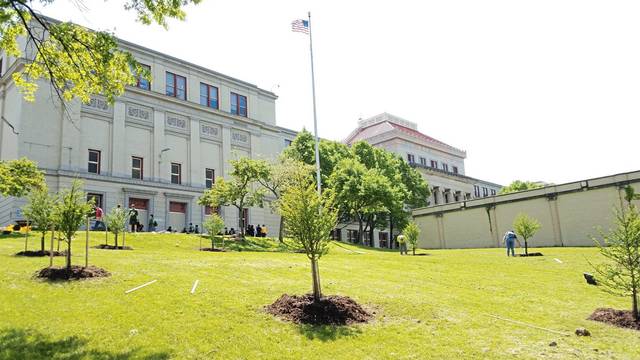Pittsburgh Public Schools extends remote learning for most students until Jan. 4
Some Pittsburgh Public School students will return to face-to-face instruction Monday, Nov. 9 under a phased hybrid approach approved by the school board Wednesday evening. But the majority will stay in remote learning until at least Jan. 4, 2021.
Under the school’s new plan, students are broken into four groups, or cohorts — AA/BB, C and D — which determines when and how they will attend school.
Under the new plan, students in what the district is calling the “D cohort” will return for four days a week beginning Nov. 9. D cohort students include those with special needs, are medically fragile students, English language learners and others.
All others will remain in online learning until Jan. 4.
Students in the AA/BB cohort were to return to school buildings starting the week of Nov. 9 on a hybrid schedule — AA students on Mondays and Tuesdays, BB students on Thursdays and Fridays, and all remote on Wednesdays. Under the new plan, AA/BB students will not return before Jan. 4 — but they will return, on the hybrid schedule, no later than Jan. 25. Their status between Jan. 4 and Jan. 25 will be determined based on conditions at the time.
Students in the C cohort had previously chosen the option of complete remote instruction. Jan. 25 is the earliest they can switch to in-person instruction, joining the AA/BB cohort.
An initial plan proposed Wednesday night would have allowed Superintendent Anthony Hamlet to implement hybrid learning for all students (with the C cohort remaining 100% online). But board member Kevin Carter called for the more phased approach.
Several board members said it was a priority to keep the population inside school buildings small, as the region experiences a spike in covid-19 cases. Pam Harbin, of District 4, noted that the board had received information about the preparedness of buildings; she said that 13 schools have “issues” with ventilation or social distancing.
“The more people we have in a building, the more people are exposed to risk,” Harbin said.
Sala Udin — who, as he reminded board members Wednesday, had originally advocated to continue online learning until the new year — said he was hesitant to weigh putting students at risk with the necessity of a better education, understanding that many have struggled to learn in a remote environment.
“The question I think that we have to solve, the riddle we have to solve: Is improved learning worth the increased risk of bringing kids back in large numbers?” he asked. “I am not able to justify in my mind bringing kids back in large groups — even though we have the promise of a better learning environment than if they are remote.”
Breaking the students into groups and allowing only students with the greatest need back in buildings, for now, seemed to resolve these concerns for board members.
A lengthy discussion took place to fully define the D Cohort group, as several members worried that some student populations would be neglected.
Veronica Edwards, of District 9, wanted to include “students who are low-achieving” to the list, and the board considered allowing individual principals to identify students who are hardest to reach and add them to this group.
But most decided this description was too subjective, and could lead to D Cohort’s size growing too large for adequate social distancing in some buildings. Edwards’ idea was defeated 7-2.
“It is up to the school district of Pittsburgh to educate all children, and we are not doing that,” Edwards said, advocating for greater access to in-person instruction.
Board President Sylvia Wilson voted against Carter’s idea. She abstained from voting on the plan saying she worried about families who would be left out of D Cohort simply because they didn’t know it was an option.
“There’s a lot of children that should be getting some in-person instruction who will not be in cohort D,” she said.
Still, the plan to return that group of students back into classrooms passed 8-0, confirming the district’s next move and the slow return of students to school buildings after seven months.
“It’s connection with our students in jeopardy,” Hamlet said.
“What I’m not promising is perfection, just like there were bumps in the road with remote learning. It was hard at first, but we were able to manage through this,” he said. “We have the protocols in place to manage the challenges as they come.”
Remove the ads from your TribLIVE reading experience but still support the journalists who create the content with TribLIVE Ad-Free.

